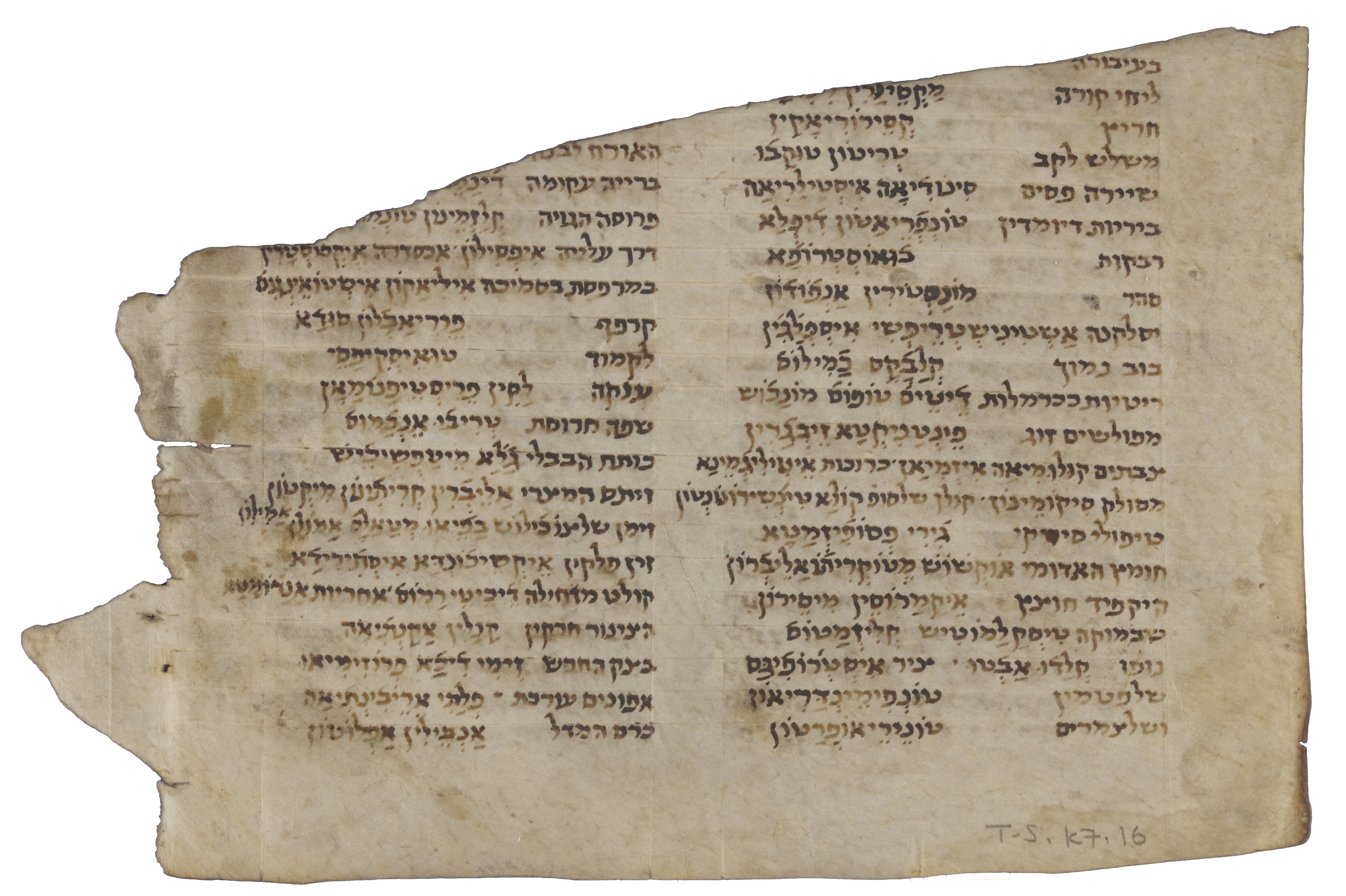Q&A Wednesday: Julia Krivoruchko on the mannerisms of Greek glosses

Julia, what are you working on today?
I’m re-examining T-S K7.16 – it’s a manuscript that I worked on a long time ago. It’s a long glossary with more than a hundred glosses. It was published by Nicholas de Lange and republished subsequently, but there’s more to say about it. My current draft of this text is 21,000 words – too long for an article or a Fragment of the Month, and too short for a book! I enjoy working on my old drafts, as I can often shorten them, since new things have been written, and I can refer to other publications instead of spelling it all out myself. But I unfortunately also get other ideas, which then end up extending the article further.
Can you tell us about T-S K7.16? Why is there so much to say about it?
Well, almost every one of the 100+ Greek glosses in the fragment deserves an article of its own. It’s a glossary for a Mishnaic text, mostly Mishnah Shabbat, Eruvin, some Pe’ah and Shekalim. The glossary has the Mishnaic lemma, and then a translation in Judaeo-Greek. Greek, of course, is not very suitable for this kind of writing.
Why not?
Because of the lack of proper recording of vowels and proper distinctions between consonants, and because we don’t know that much about the phonetics of Greek in the 11th–12th century. T-S K7.16 has been dated to the 12th century by one researcher, but I haven’t made up my mind yet about its age.
Do you think the fragment was written in a Greek-speaking context or in Egypt? Did the manuscript travel or the person who wrote it?
I wouldn’t exclude that it was actually written in Egypt.
Was this Mishnaic glossary a copied text? Or was it composed by the person who wrote it?
I think it’s a copy – a rather lousy one – from a prototype that can be reconstructed in some cases. I think the original text was written by someone that was much better educated.
When faced with having to write a lexicographical entry for a particular gloss, where do you start? Do you first look in dictionaries?
Of course not. You start by thinking about the context. I read the wider context, and often end up re-reading the entire Mishnaic tractate for the sake of one gloss. You want to understand the logic of the author, so you read commentaries, although they may be irrelevant for the particular Genizah fragment. Often there are many editions, as rabbinic literature is well studied, and you look in one and then another, and make up your mind about whether you like what you see. Unfortunately, many people treat Greek inclusions in Hebrew precisely as you have said – they open the dictionary and whatever they find they believe to be the answer – which is often very far from being true. You think of internal consistency and inconsistency of the material, of scribal practices and spelling (which are most often ignored by researchers), and then you either agree or disagree with what has been said. If you disagree, you must argue your point for a new identification, or lift your hands and say ‘this cannot be solved’ – unfortunately that’s quite frequent! There’s a psychological issue here – people become so enamoured of their solutions that they will try to fight for them tooth and nail. I find that it helps to step away from what you have written for 5–10 years, and then return to it, as you will then be better able to be objective about your solutions. You can better see when you were just trying to prove something, but that your enthusiasm hasn’t made it more probable.
These Greek glosses sound troublesome.
They are very sweet and no trouble. They are the most advanced crossword puzzles in the world, and dangerously addictive.
How do Mishnaic glossaries compare with Biblical glossaries?
Biblical glossaries follow the principles of biblical translations, while Mishnaic glossaries are a completely different matter. The author is much freer to say whatever he wants to say about the text, mostly relating to realia. Our knowledge of this realia depends on our knowledge of architecture, agricultural practices, gastronomy, clothing, jewellery, arrangements of urban life, etc.
You’re going to be teaching a Judaeo-Greek course soon at Oxford. Can you tell us about the Judaeo-Greek in the Genizah?
The only coherent Judaeo-Greek text in the Genizah is the translation of Ecclesiastes. The rest are glosses and scholia, a ketubba, and a couple of letters and haggadoth. These have all been previously published, but because new advances are being made all the time in medieval Greek grammar, we can re-examine this material under new light. There is a new Cambridge Grammar of Medieval Greek, for example, although the Genizah fragments fall below the age range of the material studied – there is no up-to-date grammar of early medieval Greek. There’s a gap between ancient Greek and late medieval/early modern Greek, and the Genizah falls into part of that gap. But the more that Greek linguistics develops, the more light will be shed on our material.
Thanks, Julia!
Julia Krivoruchko is a research associate at the Genizah Research Unit, Cambridge.

Add new comment